Did you know that over 40% of household pets are considered senior dogs? As our faithful friends enter their golden years, their needs subtly — but significantly — change. Yet, many pet owners overlook vital adjustments that can extend an older dog’s quality of life and happiness. In this comprehensive guide, we’ll walk you through straightforward, science-backed senior dog care steps to help your dog thrive, not just age. Whether you want to maximize your senior dog’s comfort, prevent health issues, or ensure their happiest golden years, you’re in the right place to make a real difference.
Why Senior Dog Care Matters: Unlocking Longer, Happier Golden Years
- Did you know that over 40% of household pets are considered senior dogs? Many pet owners underestimate their older dog's specific needs as they age, leading to missed opportunities to enhance longevity and well-being.
Senior dog care isn’t just about accommodating a slower pace or a greying muzzle; it’s about actively enhancing your pet’s remaining years of life. As older dogs enter their senior years—usually around 7 to 10 years of age, depending on breed and size—their risks of developing health issues like arthritis, heart disease, and cognitive dysfunction increase. Neglecting their evolving needs can accelerate health problems and limit their golden years. However, embracing proactive care routines and timely adjustments can improve quality of life, increase lifespan, and maintain your pet’s happiness as they transition from adulthood into their senior years.
Practical example: An older dog that switches to an orthopedic dog bed and receives routine vet screenings often enjoys more active days and less joint pain than a peer left on a standard bed and infrequent health monitoring. Recognizing the importance of these golden years means not just letting your senior pet slow down, but gently empowering them to enjoy every moment.

Recognizing When Your Dog Becomes a Senior: Key Milestones in Senior Dog Care
- Typical aging dog signs; When dog health changes indicate senior status; How to monitor older dogs’ golden years
Identifying the transition from adult to senior dog is crucial as it marks when owners should reevaluate and adapt their pet’s care. Common signs that a dog is considered senior include a decrease in activity level , increased napping, stiffness when rising, or slower walking. Some breeds, especially giant breeds, may show these signs as early as six years of age, while smaller breed dogs might not display senior traits until a decade or more. Monitoring for subtle changes—such as a reduced interest in play, changes in eating patterns, or visible joint stiffness—provides early opportunities for intervention.
These milestones are important because they often coincide with increased risks for health issues such as dental disease, kidney disease, or heart disease. Proactive tracking of changes, including regular weight checks and observing for cognitive shifts (like confusion or altered sleep cycles), allows you to address senior dog care needs before conditions become advanced. Early action fosters comfort in the golden years and helps ensure that your pet ages gracefully.
"Senior pets usually start to show behavioral or physical changes between 7 and 10 years old depending on breed and size." – Leading Veterinary Geriatrician
What You'll Learn About Senior Dog Care
- How to adapt care routines for aging dogs
- Best nutrition choices for older dogs
- Creating a comfortable home for senior pets
- Recognizing and managing common health problems
- Strategies to keep senior dogs happy and healthy
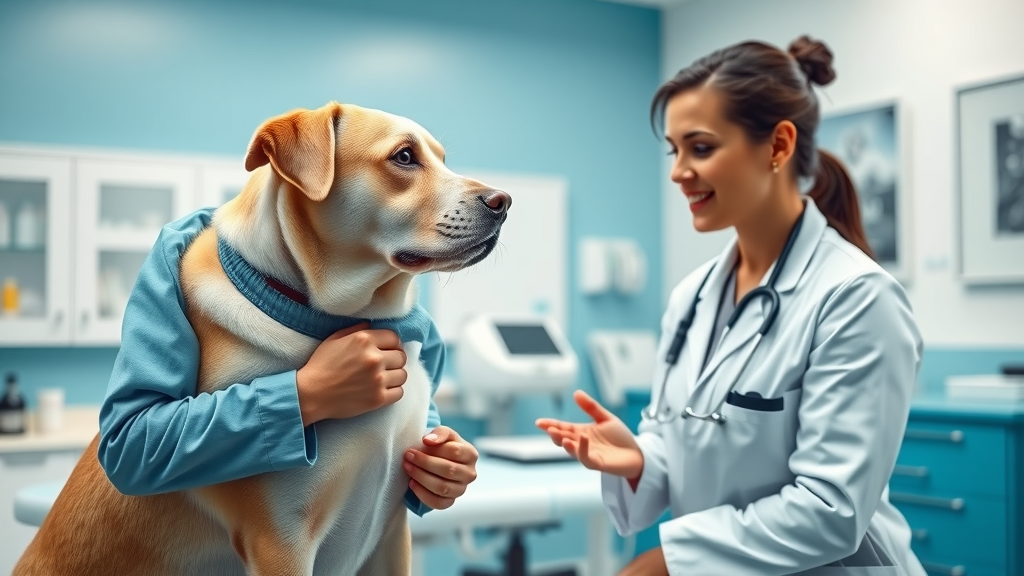
Early Action: Essential First Steps in Senior Dog Care
Scheduling Regular Vet Visits for Senior Dogs
- Frequency of checkups for older dogs and senior pets
- Preventative screenings and common health problems
One of the most impactful steps in senior dog care is increasing the frequency and thoroughness of vet visits. While adult dogs may only require annual checkups, most veterinary professionals recommend twice-yearly exams for older dogs. These routine checkups allow your veterinarian to monitor for subtle or emerging health issues—including early-stage heart disease, dental problems, and kidney disease—before they advance. Early detection often leads to more effective management and a longer, happier life for your older pet.
Regular vet visits should include comprehensive wellness screenings, such as blood work, urine analysis, and checks for arthritis or joint pain. Discuss any changes in your older dog’s mood, appetite, or mobility with your vet; even mild shifts may indicate underlying issues needing prompt attention. By being proactive, you not only protect your senior pet from unnecessary discomfort but also maximize their golden years with informed, responsive care.
Monitoring Changes in Your Aging Dog’s Behavior and Health
- Mood, mobility, appetite in the golden years
Senior dogs are masters at masking discomfort, making it essential to pay close attention to their everyday habits. A sudden decrease in mobility , reluctance to go for walks, picky eating, or increased vocalizations could all signal pain, digestive trouble, or cognitive dysfunction. Monitoring these changes can provide important clues about your dog’s health and ensure timely interventions to address common health issues in older dogs.
Use a journal or an app to record any noticeable changes, including weight fluctuations, bathroom habits, social interaction patterns, or confusion. Consistent monitoring builds a valuable history for your veterinarian and enables you to spot trends that may indicate developing problems. Remember, early recognition means earlier resolutions and a brighter outlook during the senior years.
Assessing Living Arrangements: The Right Dog Bed and Home Setup for Senior Dogs
- Supportive bedding and accessibility; Senior pet home safety
The comfort of your senior dog is directly tied to their physical environment. As joint pain and stiffness increase with age, investing in an orthopedic dog bed with ample cushioning and support is essential. These beds help ease pressure on achy joints, encourage restful sleep, and provide a sense of sanctuary. Non-slip rugs and ramps can also minimize fall risks and allow easy access to favorite spots, especially for larger or less mobile aging dogs.
Home adaptations extend beyond bedding. Make sure your senior pet’s food and water are accessible, and consider relocating bowls to avoid stairs or difficult terrain. Evaluate every area of your home for senior pet safety, removing hazards and ensuring your older dog can move around with maximum comfort and independence.
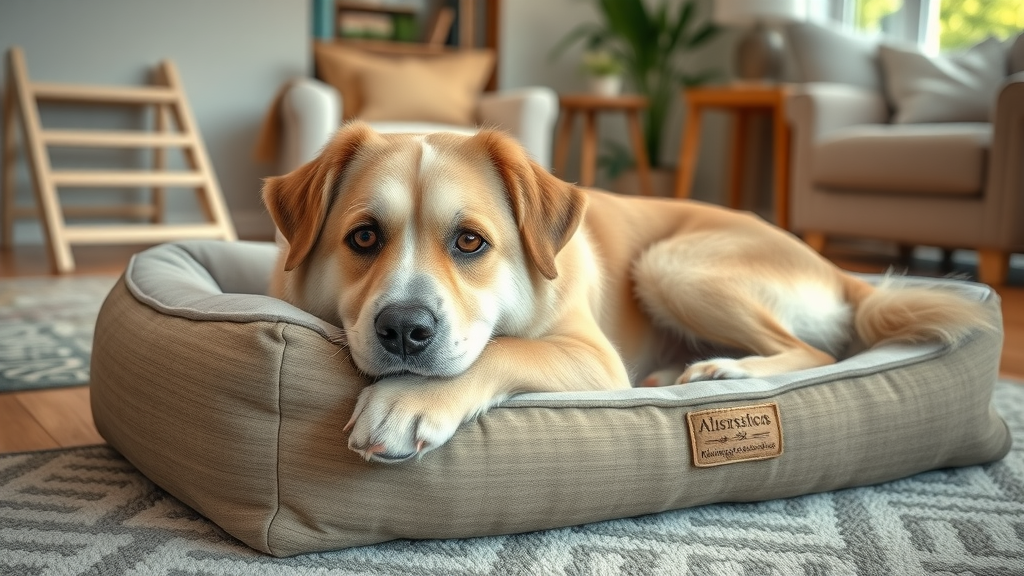
Best Nutrition and Diet Tips for Senior Dog Care
How to Choose Dog Food for Senior Dogs
- Ingredients to look for in dog food for older dogs
- Adjusting portion sizes for aging dog needs
As your dog ages, their metabolism and nutritional requirements shift. The best dog food for senior dogs generally contains high-quality protein, fewer calories, and added joint-supporting nutrients, such as glucosamine and chondroitin. Look for foods that prioritize digestibility, moderate fat content, and ingredients like antioxidants for immune support. Avoid excess sodium or artificial additives, which can exacerbate health problems in senior pets.
Portion sizes also require adjustment—older dogs are often less active, so carefully controlling calorie intake prevents weight gain and resulting stress on aging joints. Monitoring body condition score (BCS) with your veterinarian can help you fine-tune feedings. Remember, proper nutrition is a cornerstone of senior dog health and can reduce the risk of common health conditions like dental disease or kidney disease.
| Brand | Protein/Fat Content | Price Range | Special Features |
|---|---|---|---|
| Wellness Senior | 24%/10% | $$ | Added glucosamine, no fillers, antioxidant-rich |
| Hill’s Science Diet Senior | 19%/13% | $$$ | Optimal digestibility, Omega-3s for joint health |
| Blue Buffalo Life Protection | 18%/10% | $$ | Whole grains, balanced minerals, LifeSource Bits |
| Nutro Ultra Senior | 26%/11% | $$ | Superfood blend, tailored for aging dogs |
Special Dietary Needs in Older Dogs and Aging Dogs
- Supplements, fiber, hydration
- Integrating treats without compromising health
Senior dogs often benefit from targeted dietary supplements to support their changing physiology. Omega-3 fatty acids, glucosamine, and chondroitin support joint health and may alleviate symptoms of arthritis and joint pain. Increased fiber improves digestion and helps maintain healthy weight, while added antioxidants can slow age-related cellular decline. Adjusting water bowls for easier access and recognizing that older pets may need encouragement to drink more are also essential to managing kidney disease risk and ensuring healthy hydration.
Treats remain a valuable tool for enrichment and bonding, but choose low-calorie, low-sodium options, or opt for healthy snacks like baby carrots or apple slices (with seeds removed). Avoid overfeeding and resist the temptation to provide table scraps, which can disrupt your senior dog’s balanced diet. Regularly review your older dog’s nutritional needs with your vet—what worked for your pet at five years old may not suit them at twelve!
"The right dog food can add years to senior pets’ lives." – Canine Nutritionist

Keeping Senior Dogs Active: Exercise and Mental Stimulation
Safe Exercise Routines for Senior Dogs in Their Golden Years
- Low-impact exercise options; Playtime strategies for older dogs
Regular physical activity is vital for senior dogs , but exercise routines must evolve alongside their capabilities. Swap high-impact activities for gentler options like leisurely walks, moderate-paced swimming, or playful games with soft toys. For older dogs with reduced stamina or joint health concerns, frequent but shorter walks—10–15 minutes, a few times daily—are preferable to one long trek. These low-impact sessions help maintain healthy weight, muscle tone, and mobility while reducing the risk of injury or joint pain.
Innovative play can also enrich your senior pet’s golden years. Gentle tug games, obstacle courses with easy hurdles, and even hide-and-seek with treats provide physical stimulus without strain. Always monitor your aging dog for fatigue or discomfort during exercise, adjusting intensity and duration based on their needs. Remember, senior dogs thrive on routine, so keeping to a regular, predictable schedule reassures and motivates them.
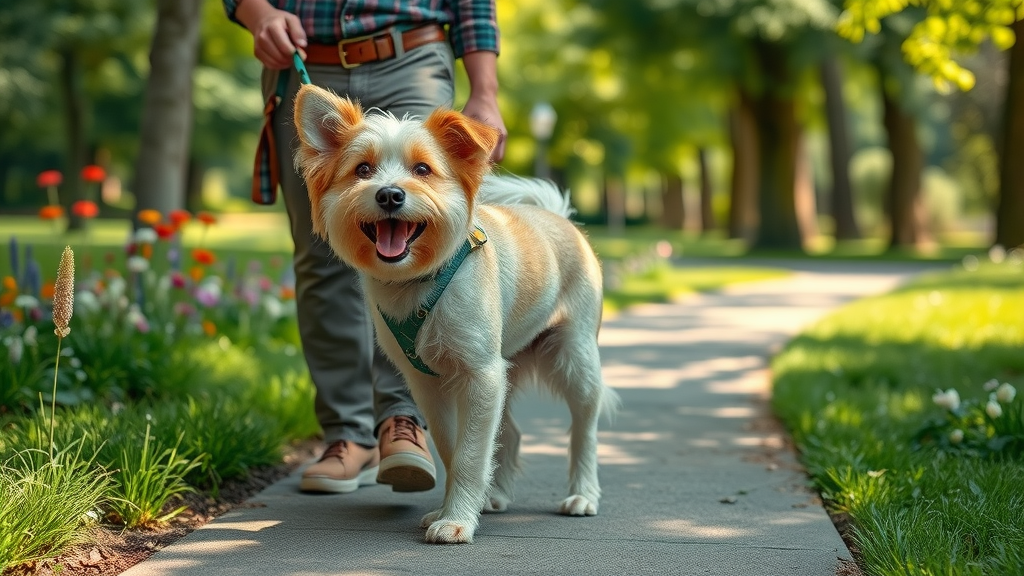
Mental Enrichment Ideas for Happy and Healthy Senior Pets
- Puzzle toys, interactive games, training tips for aging dogs
Mental stimulation is as essential as physical activity for older dogs . Puzzle feeders, treat-dispensing toys, and interactive games challenge your senior pet’s mind and help delay cognitive dysfunction. Training sessions—focusing on basic cues or fun tricks—can build confidence and provide positive attention, even for dogs prone to forgetfulness or confusion in their senior years. Mental games keep your senior pet engaged, lower anxiety, and maintain social connections, all of which contribute to a longer, more contented life.
Rotate toys and introduce new puzzles to prevent boredom and promote exploration. Snuffle mats, scent-tracking games, and slow, patient positive reinforcement activities ensure your senior dog feels accomplished and loved. Mental enrichment isn’t just about entertainment—it’s a crucial piece in keeping older pets happy and healthy day after day.
Managing Common Health Problems in Senior Dog Care
Spotting and Addressing Mobility Issues in Older Dogs
- Arthritis, joint supplements, orthopedic dog beds
Mobility challenges are among the most common health issues in senior dogs . Signs include reluctance to climb stairs, difficulty getting up, or a decreased willingness to jump or play. Early intervention is key: Support joint health by introducing glucosamine, chondroitin, or fish oil supplements as recommended by your vet. Adjust your dog bed to one designed specifically for orthopedic support; these beds can relieve pressure and help manage arthritis pain in older pets.
In addition to supplements and bedding, non-slip flooring and dog ramps minimize the risk of falls. Regular, gentle exercise helps preserve muscle mass and maintain flexibility, mitigating much of the discomfort associated with mobility loss. Consulting your veterinarian about any noticeable struggle ensures you stay ahead of serious health problems and gives your aging dog the best possible quality of life.
Dental Care for Senior Dogs to Promote Overall Dog Health
- Daily brushing, vet dental cleanings, treats for oral health
Oral health often declines as dogs age, with dental disease posing threats not only to teeth and gums but to the heart and kidneys as well. Establishing a routine of daily tooth brushing with dog-safe paste is the gold standard for preventing plaque buildup and bad breath. For some older dogs, dental treats and water additives offer supplementary support—but always check ingredient lists for suitability in senior pets.
Annual or biannual professional cleanings by your veterinarian become more important during the senior years, helping to address any hidden infections or gum disease before they trigger systemic health problems. Ignoring routine dental care can lead to chronic pain, eating difficulties, or even increased risk for serious secondary diseases. Staying proactive about dental hygiene is a simple, high-impact step to improve senior dog health overall.
Monitoring for Cognitive Dysfunction and Behavioral Changes in Aging Dogs
- Early interventions and home routines for memory support
Cognitive dysfunction is a lesser-known but increasingly common issue in senior dogs. Signs include disorientation, changes in sleep or toilet routines, confusion during familiar tasks, and increased agitation. Early intervention—such as reorganizing home routines, maintaining strictly predictable daily schedules, and introducing brain games—can slow cognitive decline and reduce distress for both senior pets and their owners.
There are also veterinary-supplied diets and supplements that target brain health. Open conversations with your vet can help differentiate normal aging from treatable cognitive dysfunction, allowing you to optimize your dog’s quality of life as they age in place. By addressing behavioral and cognitive changes compassionately, you help your older dog feel secure, loved, and at ease throughout their golden years.
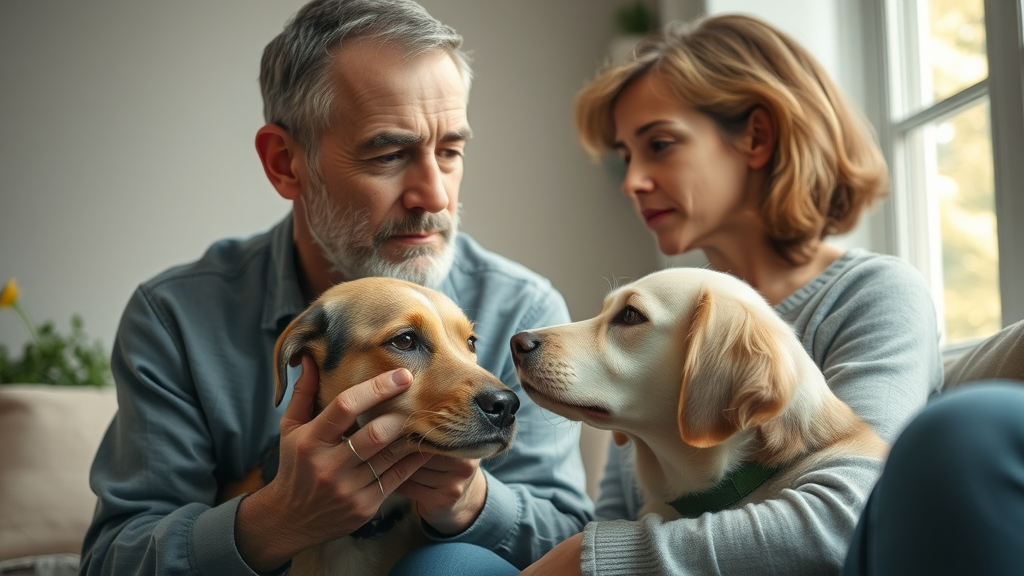
Creating a Comfortable and Supportive Home for Senior Dogs
Adapting Your Home Environment
- Non-slip flooring, accessible food/water stations, familiar routines
A safe, reassuring environment underpins quality senior dog care. Begin by addressing surface textures: Non-slip flooring—think rugs or mats—reduces fall risks and builds older dogs’ confidence as they move. Make food and water stations level and easily accessible; elevated bowls can alleviate neck and back strain for senior pets. Above all, maintain familiar routines—whether it’s regular feeding times, walking routes, or nightly cuddles. Consistency soothes anxiety and assists memory-impaired dogs to navigate each day with less stress.
Lighting and navigation cues also benefit senior dogs: Keep pathways clear, use nightlights for evening trips, and minimize furniture rearrangement. Small details, like leaving on a calming radio or offering a favorite blanket, remind aging dogs they’re cherished and help offset the confusion that can come with declining senses.
Choosing the Best Dog Bed and Accessories for Senior Dog Comfort
- Heated dog beds, ramps, orthopedic support
The best dog bed for older dogs is one that cushions aging joints, moderates temperature, and provides security. Heated beds can soothe arthritis, while orthopedic foam distributes pressure evenly. Pair beds with ramps to favorite spots—like your sofa or the car—and invest in cozy, easy-clean blankets. These small investments multiply your senior pet’s daily comfort, protecting them against further joint pain and escalating injury risk.
Review your dog’s accessory needs seasonally: protective booties for winter, cooling mats for summer, and flat, stable water bowls all add up to significant quality-of-life improvements for senior pets. Remember, comfort isn’t a luxury in the golden years—it’s an essential investment in both physical wellness and happiness.
"Small adjustments to your senior pet's environment go a long way in the golden years." – Animal Behaviorist
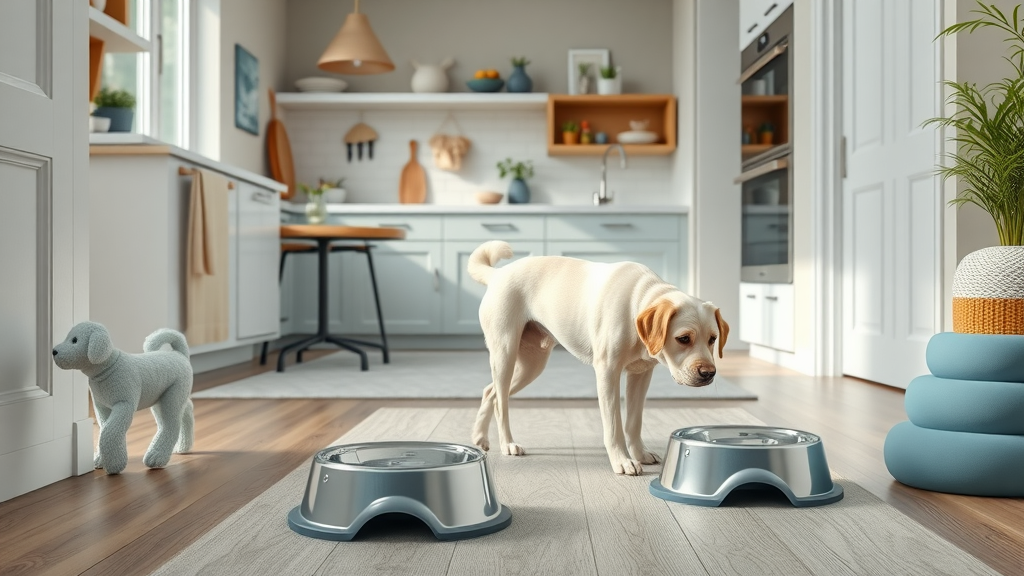
Emotional Well-Being: How to Keep Senior Dogs Happy and Healthy
Building Daily Bonding Rituals with Older Dogs
- Gentle handling, sensory enrichment
- Making your aging dog feel loved every day
Bonding becomes even more precious as dogs age. Dedicate time each day to gentle stroking, soothing massages, or simply sharing quiet moments with your senior dog . Older dogs thrive on routine affection and sensory enrichment—soft toys, textured blankets, or safe smells (like a favorite human’s T-shirt) deliver reassurance and joy. By intentionally marking out “together time,” you strengthen your pet’s sense of belonging and lower their anxiety.
Small daily rituals—like brushing, one-on-one walks, or even sharing a window perch—build resilience and emotional health, helping older pets feel loved, understood, and anchored even as their world changes. These connections remain powerful, especially as physical abilities start to decline.

Managing Anxiety and Stress in Senior Pets
- How routines and familiar objects support a senior dog's happiness
Senior dogs are sensitive to disruptions. Routine is your friend: consistent meal times, walks, and bedtime decrease anxiety and help aging pets feel safe. Familiar objects—favorite blankets, an old toy, even your scent—provide invaluable comfort in the face of declining vision or hearing. If your senior pet begins to show signs of separation anxiety or night-time restlessness, try pet-safe anxiety wraps or calming diffusers as gentle support tools. Persistent anxiety may require collaboration with your veterinarian to rule out treatable medical causes or to create a tailored management plan.
| Week | Physical Activity Idea | Mental Activity Idea |
|---|---|---|
| 1 | Gentle walk in new park | Puzzle feeder with favorite treats |
| 2 | Swimming session | Scent-tracking game |
| 3 | Indoor play with soft toys | Hide-and-seek with snacks |
| 4 | Short outdoor adventure | Training session (basic cues) |
People Also Ask
At what point should an elderly dog be put down?
- Understanding quality of life assessment for senior dogs
Deciding when to say goodbye to an elderly dog is one of the hardest parts of pet ownership. Use a quality of life assessment , evaluating factors like pain, appetite, mobility, hygiene, and engagement with family. If your senior dog can no longer enjoy basic pleasures—despite veterinary support—and is experiencing more bad days than good, humane euthanasia may offer the kindest release from suffering. Always consult with your vet to ensure every option and support mechanism is explored first.
What is the leading cause of death in senior dogs?
- Most common health problems and natural lifespan of older dogs
The leading cause of death among senior dogs varies by breed but usually includes cancer, kidney disease, and heart disease. Advanced arthritis, severe cognitive dysfunction, and organ failure also figure prominently. Many of these health problems develop slowly, which is why regular vet visits are critical in the golden years. Recognizing symptoms early can lead to better management and, in some cases, longer life spans for older pets.
Did my dog know I loved him before he died?
- Emotional awareness in aging dogs; Building connections in the golden years
Aging dogs remain deeply attuned to their owners’ emotions and routines. Evidence suggests that senior dogs feel love through consistent affection, warm tones, gentle handling, and daily bonding. Even as senses fade, dogs respond strongly to scent, touch, and routine. Rest assured, your senior companion senses your care—even in their final moments.
Is 14 years old for a dog?
- Typical lifespan for various breeds; What 14 years means in senior dog care
Fourteen is considered quite senior for most dogs. Small and toy breeds commonly live to 14 or more, while giant breeds are considered elderly by age 7 or 8. At 14, even healthy dogs require extra vigilance: increase vet visits, focus on comfort and safety at home, and cherish every moment with your aging companion. Celebrate their longevity by adjusting care to meet their evolving needs.
Frequently Asked Questions on Senior Dog Care
- What age is considered a senior for dogs? – Most dogs are considered senior between 7 and 10 years of age, depending on size and breed. Larger breeds generally age faster than smaller ones.
- How often should senior dogs visit the vet? – Senior dogs should see their vet at least every 6 months for wellness checks and preventative screenings.
- What changes should I expect in my older dog’s behavior? – Expect decreased energy, increased napping, possible stiffness, changes in appetite, and occasionally, shifts in temperament or confusion.
- What are the best dog food choices for older dogs? – Look for formulated senior dog diets with quality protein, joint support, reduced fat, and added antioxidants. Consult your vet for the best fit for your pet’s needs.
Top 10 Simple Habits to Enhance Senior Dog Care Every Day
- Routine vet checkups
- Quality nutrition
- Low-impact exercise
- Dental care
- Mental stimulation
- Cozy resting areas
- Regular grooming
- Hydration
- Social interaction
- Emotional support
Key Takeaways for Senior Dog Care in Their Golden Years
- Start senior dog care early
- Focus on health and happiness
- Small changes make big impacts
- Stay proactive with vet and dietary routines
- Love and enrichment are essential to older dogs and aging dogs
Give Your Senior Dog the Best Golden Years: Next Steps
- Make the changes recommended above today to help your senior dog thrive
- Schedule a vet checkup now
- Share these senior dog care tips with friends and family
Take action now: Start one of the habits above today, and you’ll be taking the first step to give your senior dog their best, most comfortable golden years .
To further enhance your understanding of senior dog care, consider exploring the following resources:
- Caring for a Senior Dog: Keeping Your Pet Healthy and Happy ( medvet.com )
This article provides comprehensive insights into mental stimulation techniques, grooming practices, and home modifications to ensure your senior dog’s comfort and well-being.
- Senior Dog Care: Tips to Keep Older Dogs Happy and Healthy ( bestfriends.org )
This resource offers practical advice on veterinary visits, maintaining a healthy weight, and appropriate exercise routines tailored for aging dogs.
By delving into these articles, you’ll gain valuable knowledge to support your senior dog’s health and happiness during their golden years.
 Add Row
Add Row  Add
Add 





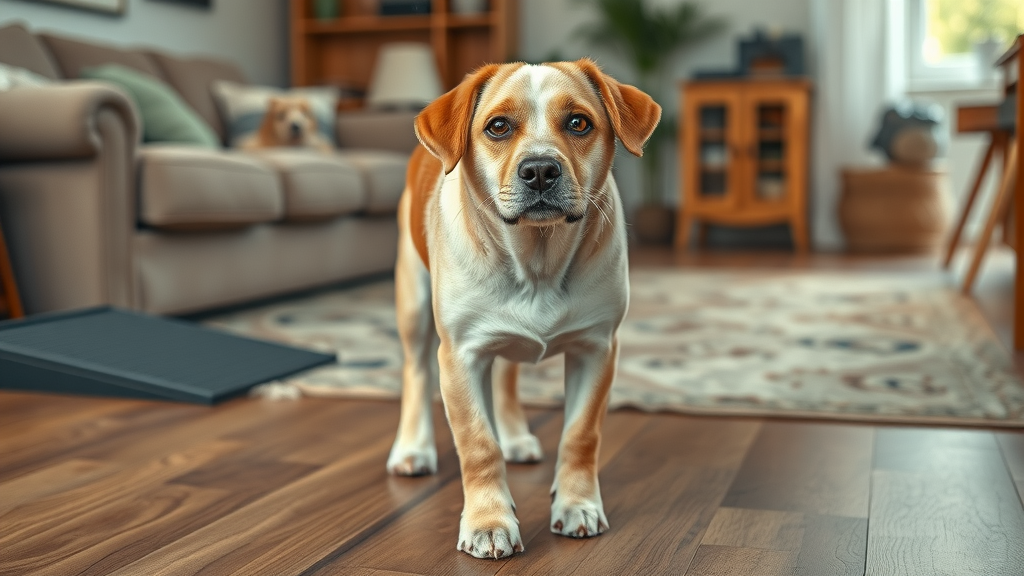


Write A Comment